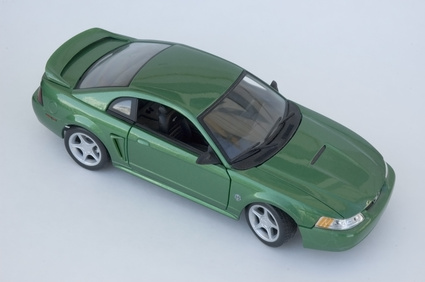
The radiator is a vital part of any fossil fuel powered vehicle. It prevents the engine from overheating. Radiators are commonly made of copper, aluminum and plastic to prevent corrosion because water is used as cooling fluid. Engine heat is absorbed by the cooling fluid and carried to the radiator, where it is dissipated by air passing through thousands of cooling fins. Radiators are tough devices, but high pressure and temperature can cause it to have hairline cracks on its plastic. Learn how you can repair hairline cracks and avoid a costly radiator repair.
Get a tube of cold-weld compound that is used by mechanics to repair engine parts. Go to your local auto parts store and ask the clerk to recommend a product that can withstand high engine temperatures of up to 500 degrees Fahrenheit, have the strength matching the characteristics of steel, and possess the ability to be impervious to water, gasoline, chemicals and acids.
Turn off the engine, open the hood and let the engine cool. Unscrew the radiator cap. Locate the drain plug at the bottom of the radiator. Place a drain pan under the plug, open the plug by turning it counterclockwise with a crescent wrench and allow the radiator to completely drain. Locate the leak and dry the area as much as possible. Wipe it down with a shop rag and acetone and examine the crack. Dry the area completely using a blow dryer. Push down on the crack lightly to get in between the edges of the cracked plastic and dry.
Rough the area around 1 inch from the crack using very rough sandpaper. Score the area around the crack using the sharp edge of a utility knife and make a few deep scratches in the plastic. Be careful not to puncture the plastic or make the crack worse, but put enough pressure to make some gouges on the plastic. Wipe the area with a damp shop rag and clean the area again with acetone. Blow dry the area once more to ensure there is no moisture along the cracks.
Put some painter's tape around the edges of the rough area at about 3/4 inch from the crack. Read the instructions on the cold-weld compound to familiarize yourself on how to use it. Thoroughly mix an equal amount of chemical from each tube of the compound on a piece of cardboard, using a plastic knife.
Apply the mixture with plastic knife to the 3/4-inch area around the crack and push the mix into the crack. Cover up all the cracks and any gaps and build up the compound to about 1/8 inch thick. Blow dry the compound about a minute or two minutes to help it start to harden. Keep the mixture inside the taped area by neatly wiping off any excess mixture using a shop rag.
Allow four to six hours for the mixture to set and 15 to 24 hours for it to cure. Replace and tighten the radiator plug, fill the radiator with a mixture of 50 percent water and 50 percent antifreeze or coolant, and replace the radiator cap. Turn on the engine and run it on idle for 40 minutes. Keep an eye for any leaks in the patch area. Expect some steam from residual water.